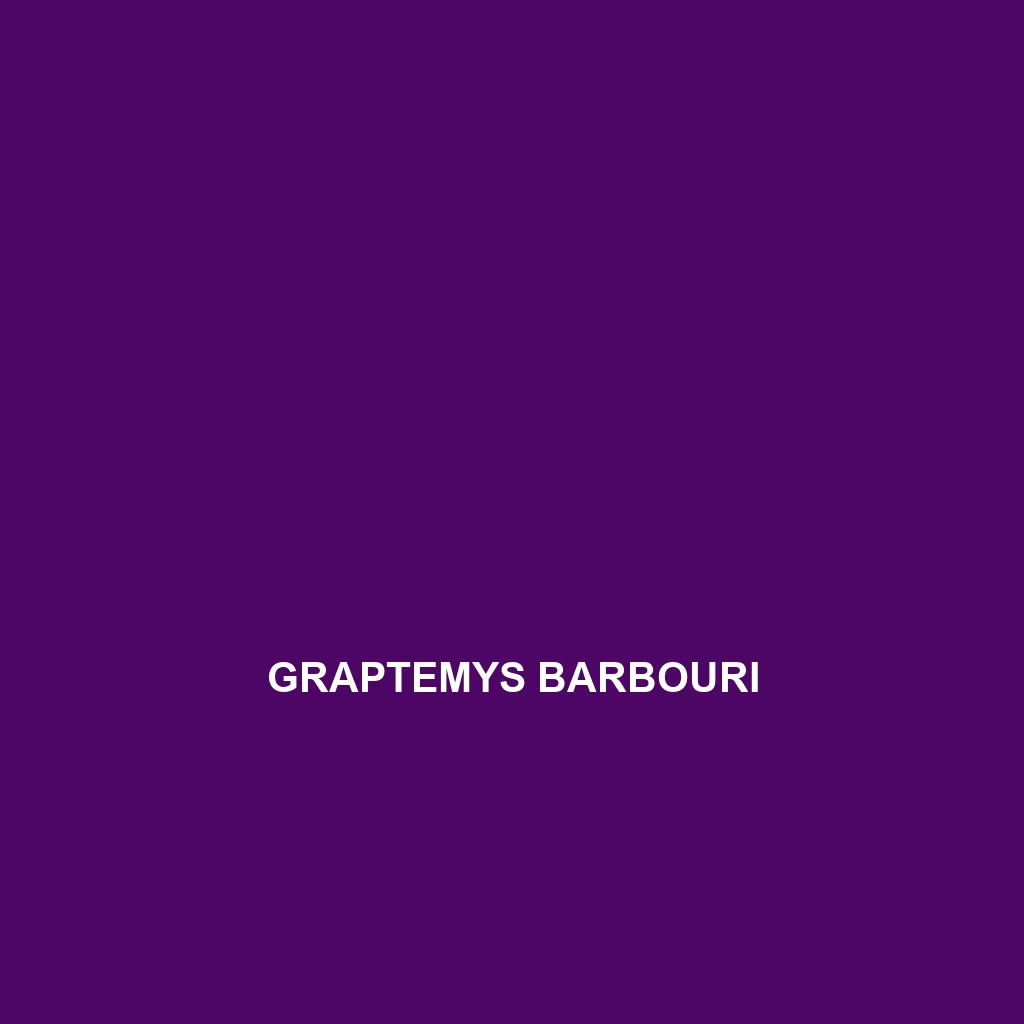Common Name
Graptemys barbouri
Scientific Name
Graptemys barbouri
Habitat
The Graptemys barbouri, commonly known as Barbour’s map turtle, primarily inhabits freshwater systems in the southeastern United States, particularly in the regions of Mississippi, Alabama, and Louisiana. This species thrives in slow-moving rivers, lakes, and marshes, often characterized by sandy or muddy substrates surrounded by rich aquatic vegetation. The climate of these habitats ranges from humid subtropical to temperate, providing the turtles with a warm environment abundant in food sources and suitable basking spots. Barbour’s map turtle favors habitats that include ample logs and rocks for sunbathing, which are crucial for thermoregulation. This reliance on specific environmental conditions makes their habitat critical for survival.
Physical Characteristics
Graptemys barbouri exhibits several distinctive features that set it apart from other turtle species. Adult turtles typically range from 4 to 10 inches in carapace (shell) length, with females generally being larger than males. The carapace is characterized by a flattened shape and possesses intricate markings that resemble a map, typically featuring yellow or light green lines on a dark brown or olive background. A key distinguishing feature of Barbour’s map turtle is its pronounced, elongated snout, which aids in foraging for food in its aquatic environment. Their skin is smooth and dark with subtle patterns, contributing to effective camouflage against predators. Understanding these physical traits is essential for identifying and studying this unique turtle species.
Behavior
Diet
Graptemys barbouri is predominantly an omnivore, with a varied diet that includes both plant and animal matter. Their feeding habits typically encompass aquatic invertebrates, such as insects and crustaceans, as well as various types of aquatic vegetation and algae. This dietary flexibility allows them to thrive in different environmental conditions. Interestingly, juvenile turtles may lean more towards an insectivore diet, while adults show a broader range of food sources, adjusting their diet based on availability and seasonal fluctuations. Understanding the dietary patterns of Graptemys barbouri is crucial for appreciating their role within aquatic ecosystems.
Reproduction
The reproductive cycle of Graptemys barbouri generally occurs from late spring to early summer. Mating typically takes place in the water, with male turtles displaying courtship rituals to attract females. After mating, females will seek suitable nesting sites, often favoring sandy or loose soil areas near the water. The female lays a clutch of approximately 4 to 12 eggs, and the incubation period lasts around 60 to 90 days, depending on environmental conditions. Hatchlings emerge in late summer or early fall and are independent from birth, necessitating mature survival skills to evade predators. This reproduction cycle highlights the importance of habitat availability for both nesting and juvenile survival.
Conservation Status
The conservation status of Graptemys barbouri is currently listed as vulnerable due to habitat loss, pollution, and overexploitation. Human activities, such as river channelization and urban development, have significantly impacted their freshwater habitats, leading to population declines. Conservation efforts are underway, focusing on habitat restoration, public awareness campaigns, and legal protections to conserve remaining populations. It is critical to monitor threats to Graptemys barbouri to ensure the long-term survival of this unique turtle species.
Interesting Facts
Graptemys barbouri possesses unique adaptations that make it stand out in its environment. One interesting fact is that they have the ability to remain submerged for extended periods, allowing for effective predator evasion and resource utilization. Additionally, Barbour’s map turtles are known for their rich patterns, which can change as they age, creating a fascinating interplay of color and morphology influenced by their habitat. These adaptations underscore the species’ resilience and adaptability to environmental changes.
Role in Ecosystem
Graptemys barbouri plays a significant role in its ecosystem as both a predator and prey, contributing to the ecological balance of freshwater systems. By feeding on various invertebrates, they help manage populations of these organisms, promoting healthy aquatic ecosystems. Furthermore, as a food source for larger predators, including birds and mammals, Barbour’s map turtles are integral to the food web. Their activities also contribute to nutrient cycling within their habitats, making Graptemys barbouri a keystone species in maintaining ecosystem health.
